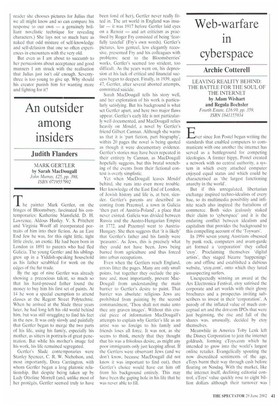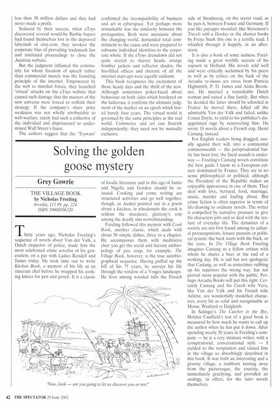Web-warfare in cyberspace
Archie Cotterell
LEAVING REALITY BEHIND: THE BATTLE FOR THE SOUL OF THE INTERNET by Adam Wishart and Regula Bochsler Fourth Estate, £16.99, pp. 359. ISBN 1841155934 Ever since Jon Postel began writing the standards that enabled computers to communicate with one another the internet has served as a battleground for competing ideologies. A former hippy, Poster created a network with no central authority, a system in which every attached computer enjoyed equal status and which could be characterised as 'the largest functioning anarchy in the world'.
But if this unregulated, libertarian exchange inspired techno-idealists of every hue, so its multimedia possibility and infinite reach also inspired the battalions of commerce. Both sides jealously staked their claim to 'cyberspace' and it is the enduring conflict between idealism and capitalism that provides the background to this compelling account of the 'Toywars'.
In 1994 seven young Austrians obsessed by punk rock, computers and avant-garde art formed a 'corporation' they called 'etoy'. Proclaiming themselves 'digital artists', they staged bizarre 'happenings' onand offline and established a dubious website, 'etoy.com', onto which they lured unsuspecting surfers.
Unexpectedly winning an award at the Ars Electronica Festival, etoy satirised the corporate and art worlds with their glossy brochures and a prospectus inviting subscribers to invest in their 'corporation'. A parody of the inflated value of much conceptual art and the dot-coin IPOs that were just beginning, the rise and fall of the shares was, unusually, decided by etoy themselves.
Meanwhile in America Toby Lenk left the Disney Corporation to join the internet goldrush, forming eToys.com which he intended to grow into the world's largest online retailer. Evangelically spouting the now discredited sentiments of the age, eToys burnt their way through cash before floating on Nasdaq. With the market, like the internet itself, declining editorial control, eToys' value quickly rose to eight billion dollars although their turnover was less than 30 million dollars and they had never made a profit.
Seduced by their success, when eToys discovered several would-be Barbie buyers had found themselves lost in the depraved labyrinth of etoy.com, they invoked the corporate bias of prevailing trademark law and instituted proceedings to close the Austrian website.
But the judgment inflamed the community for whom freedom of speech rather than commercial muscle was the founding principle of the internet. Empowered by the web to marshal forces, they launched 'virtual' attacks on the eToys website that caused such damage that the masters of the new universe were forced to rethink their strategy. If the company's share price weakness was not wholly attributable to web-warfare, rarely had such a collective of the individual and dispossessed so undermined Wall Street's finest.
The authors suggest that the `Toywars'
confirmed the incompatibility of business and art in cyberspace. Yet perhaps more remarkable was the similarity between the protagonists. Both were messianic about the changing world, demanded total commitment to the cause and were prepared to subsume individual identities to the corporate whole. If the eToys dressdown did not quite stretch to shaven heads, orange bomber jackets and reflector shades, the fun-filled offices and rhetoric of all the internet start-ups were equally uniform.
This book recaptures the excitement of those heady days and the thrill of the new. Although sometimes poker-faced about behaviour on both sides which bordered on the ludicrous, it confirms the ultimate judgment of the market on an epoch which lasted barely four years. The virtual world is governed by the same principles as the real world. Commerce and art can flourish independently: they need not be mutually exclusive.



































































 Previous page
Previous page